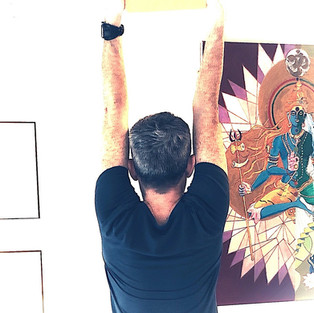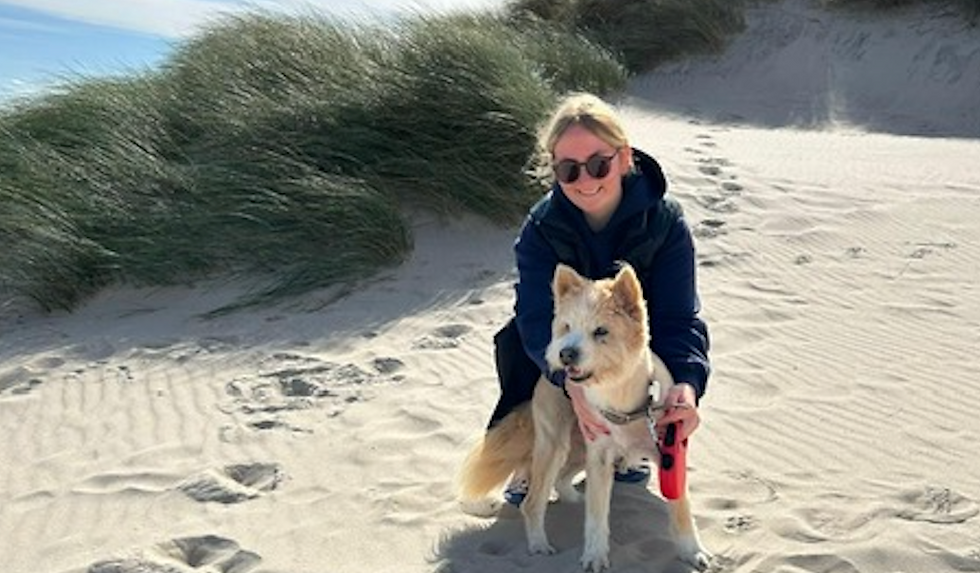Rotator cuff injuries, and how yoga can help
- 11. feb. 2020
- 5 min læsning
- Written by Greg Walsh,
visiting YOGA HUSET march 2020 buy tickets here.
Do you have shoulder pain? By some estimates, 67% of people in the USA will experience shoulder pain or discomfort over their lives. Read on to learn what causes shoulder pain, and learn some exercises and yoga stretches which you can do at home to relieve your shoulder pain.
In our new monthly Samadhi Anatomy with Greg Walsh blog we are going to dive into the anatomy and physiology of your body, discuss where how and why pain occurs, and we will look at how to execute poses which can ease your pain and discomfort through yoga.
Many of us will at some point in our lives have shoulder pain. The causes can be manifold, but over the next few months we will discuss some of the common issues. Most shoulder pain comes from soft tissue injuries, meaning damaged or irritated ligaments, tendons, cartilage or muscles. Active people, athletes, skilled workers and heavy lifters are particularly prone to shoulder pain, but it can strike anyone at any time, through overuse, a sudden jarring movement, it can be age related, or it can slowly develop over time.
Your shoulder is made up of three bones: your scapula (shoulder blade) your clavicle (collarbone) and your humerus (upper arm bone). Your shoulder joint is a ball and socket articulation, the humerus bone head is the ball, and it sits into a shallow socket at the outer end of the scapula.
The shallowness of the shoulder socket is what gives us such a great range of motion in the shoulder, compared to the deeper ball and socket joint in our hip. You know the way you can swing your arms around like a windmill? Can you imagine being able to do that with your legs! that shows you the difference in depth between the shoulder and hip joints.
Shoulder Soft Tissue Injury Recovery Time
Many people ask about the recovery time for soft tissue shoulder injuries. This can range from between 1-2 weeks for a grade 1 strain or sprain, to up to 6 months for a grade 3 tear. If you experience a soft tissue injury in your shoulder (or any part of your body) you are always recommended to:
Rest
Ice
Compress
Elevate
As with any injury should always see a healthcare professional. They will advise you on the best treatment. Always ask your healthcare professional’s advice before beginning yoga practice.
Rotator Cuff Injuries

Your Shoulder Rotator Cuff is a group of 4 muscles: subscapularis1, teres minor2, supraspinatus3, and infraspinatus4. These 4 surround your shoulder joint and hold the head of your humorous bone firmly in your shoulder socket. You can injure your rotator cuff muscles in many ways, but repetitive movements with force, having the arm overhead is a classic way to pick up an injury: think of serving at tennis as an example.
More often than not the injury is a tear in the tendon of the supraspinatus muscle. This tear can be just a small fraying of the tendon, a partial tear, or a full tear where the tendon disconnects from the bone.
An injury of the rotator cuff muscles can feel like a dull ache, and it often feels worse at night, when we roll onto the shoulder during sleep. You will often find the pain is accompanied by a weakness in the arm, and difficulty taking the arm up or back.
Conventional treatment of a shoulder rotator cuff injury is either surgical or non-surgical. Obviously non-surgical treatments are explored first, including rest, ice, and physical therapy. If these options do not clear up the pain, a steroid injection is often suggested.

An injection of Hydrocortisone can ease pain and aid recovery, the effects should last 3-6 months. The injection is often given with an ultrasound scan, so that the steroid can be administered to exactly the correct spot. Studies have shown that the effects of a steroid injection do not last longer than 3 months 5, but that can be enough time for recovery to occur.
If non-surgical methods are not effective, keyhole surgery, or arthroscopy, is often recommended.
How yoga can help with rotator cuff injuries:
Weight bearing can be an issue with a rotator cuff injury, as can raising your arms above your head. However modified versions of these movements in yoga poses have been shown to help to rehabilitate a moderate tear.
1. Tadasana Variations
Tadasana is such a simple pose that it is often overlooked. Because in shoulder terms it is not weight bearing, and because the spine is in a neutral position, it allows us to play with shoulder mobility, and explore where pain begins in various arm positions.
a. Hold a brick behind the back, and grip it with the palms, not the fingers. Squeeze the brick, straighten the arms, and take the brick down.
b. Hold a brick between the palms, and attempt to lift it above the head. Grip it with the palms, not the fingers. Squeeze the brick, straighten the arms, and lift the brick. Also lift the armpits, and spread the shoulder blades. You may find you cannot lift the brick as high as shown in the picture. No problem lift to your comfortable limit.
c. Put a looped belt around the wrists, behind the back, and hit out into it. Straighten the arms, and extend the hands downward.
d. Put a looped belt around the wrists, straight out in front, and hit out into it. Straighten the arms, and extend the hands forward and upward. As the arms rise you will get to a stiff point, where you will want to poke out the chest and sway the back. Resist, take the lower front ribs in, and keep the abdomen engaged. Also lift the armpits, draw the elbows in and spread the shoulder blades.
2. Wall Chaturanga Dandasana

Classical Chaturanga Dandasana on the floor involves a lot of weight bearing, more than a shoulder injury may appreciate. Bit it can be done standing up, with the hands pushing into the wall. It is the same pose anatomically, except that your axis has shifted 90 degrees, which hugely reduces the weight bearing. To add more weight you can stand further from the wall, to ease weight bearing stand closer to the wall.
3. Adhomukha Svanasana
If you are a regular in my classes you will know that Adhomukha Svanasana is one of my favourite poses. I think it has so much to give! However, it is also a weight bearing pose. So if you are rehabilitating a rotator cuff tear of shoulder injury, I recommend doing Adhomukha Svanasana with your hands on a height. It can be the seat of a chair, or the wall. If you know Samadhi yoga studios, the upstairs window ledges ar

e perfect for this. Having the hands on a height takes much of the weight out of the shoulders, allowing you to control the amount of
effort and stretch, and to focus more directly on spreading and drawing down the shoulder blades.
How a modified Sirsasana preparation helps with rotator cuff pain:
Triangular Forearm Support was discovered by a New York based doctor (who is a long term yoga practitioner) called Dr Loren Fishman6. Dr Fishman received a prize at the International Conference on Yoga for Health and Social Transformation for a paper he presented, outlining a treatment using a non weight bearing preparation for Sirsasana (headstand). He discovered it after he badly tore the tendon of his supraspinatus muscle while driving. A short while later he tried to do Sirsasana, and when he came down he discovered he had an increased range of motion without pain, even though an MRI showed that his supraspinatus tendon was still torn. How it works is it trains the subscapularis muscle (which as its name implies, lies under the shoulder blade) to take on the work of the supraspinatus muscle.

To Do:
Interlink fingers, and place the elbows (shoulder width apart) on a wall. Step the legs back, keeping one closer to the wall for steadiness, and ground the forearms into the wall. Lift the head away from the wall. hold for 30 seconds.
Footnotes












Kommentarer